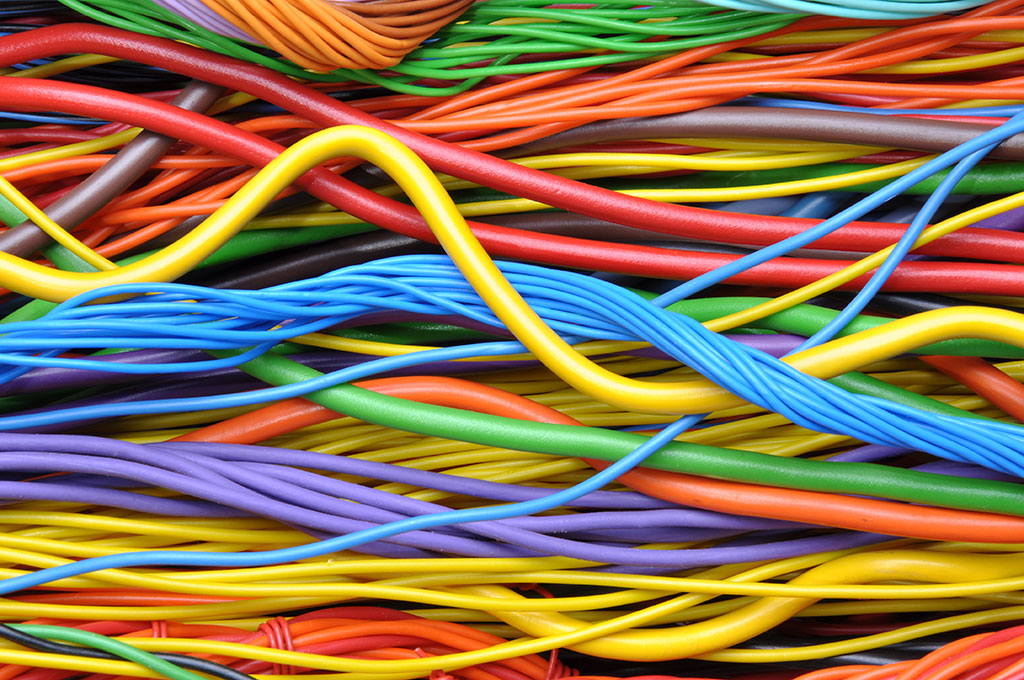Backbone Cabling or Horizontal Cabling?

Today businesses communicate with people via phones and the internet. We share files, conduct video conferencing, and do so many things without realizing that all this is possible due to network cabling. In other words, routers, switches, computers, and storage areas connect through cables, such as backbone and horizontal cabling.
In this blog post, Expert Tech will discuss the two types of communications cables and their application specific to each situation.
What is Backbone or Vertical Cabling?
Backbone cabling can be copper or fiber and is intended for data cabling installation when operating from many locations. So, are copper cabling and fiber cabling the same?
Structured cabling or Ethernet systems connect computers to a local network or LAN. The key concept behind this is that most computers in the office directly access a specific data cabling cabinet. To illustrate, a cable system like Ethernet is a good option for small businesses with a small computer network.
Structured cabling is a centralized system that interconnects telephones, printers, Wi-Fi, CCTV, and audiovisuals.
Backbone cabling connects two separate areas so that they can share the same network and communications. For instance, there will be separate cabinets or communications rooms specific to each floor on a multi-story building. Once connected, these cabinets can communicate with each other. In some situations, each floor may have small wall cabinets to run a small remote area like a storage room.
Backbone cabling, also known as vertical cabling, is employed to communicate between telecom rooms, buildings, access facilities, or machine rooms. Backbones can integrate with many cables, such as coaxial, fiber optic cabling, and structured cabling.
Fiber optic cabling is typically the benchmark for connecting two individual communication rooms. However, many prefer copper backbone due to the cost considerations and ease of installation.
The copper backbone can be from Cat5e through Cat8. With Cat6a, Cat7, and Cat8, it’s possible to reach a 10 Gigabit capacity between two cabinets, while the other cables work for 1 Gigabit.
What is Horizontal Cabling?
Horizontal cabling links telecoms with individual work areas. Typically the installation is done in a star-shape topography, but in some situations, a ring topography can be applied too. The system consists of cabling from the telecommunication room, mechanical terminations, a patch panel, and an additional consolidation point.
What is the difference between the backbone and horizontal cabling?
Installation of a horizontal cable comes from the user device as a computer or telephone or linked precisely to an IT or communication room. As a result, workplaces, data stores, and other services get connected and then run to the telephone communication room.
Your needs must first be defined to know which cable to use in your office. For most of the part, Ethernet is enough, but fiber optic cables can also do the job. Both cabling systems have many features in common when it comes to telecommunication services. Both are vital in building large networks in business environments or schools.
So, the type of cable used matters a lot.
What To Know Before Cable Installation
Backbone systems are also known as riser systems since cables are wired in a straight riser in most situations.
In a multi-story building, for instance, equipment or a computer room connects to the basement and communication cabinets on all floors through the backbone.
Yet, on the campus, the backbone can operate horizontally, linking more than one entrance and remote communication rooms. However, in some situations, there’s no real difference between the words “vertical” and “horizontal.” Physical topographies are unique for each situation, so sometimes, communication has nothing to do with our understanding of a backbone.
A backbone system’s main task is facilitating various user programs, covering voice transfers, multimedia networks, and high-speed data.
Expert Tech professionals can meet these requirements through careful spinal planning. Our installation goes in hand with future growth and advanced applications. That’s why we install fiber optical backbones that can be boosted with bulk end fibers.
Fiber-optic cables can be installed in some parts of the backbone. When using a multimode cable, it is a good idea to leave some strands unused for future wiring.
Voice Cabling Connections
VOIP makes up most phone systems, meaning the Ethernet is used to transmit voice signals. On the other hand, outdated digital and analog systems have to be connected via copper cabling. One or two pairs per outlet will be used for a phone with an analog system. As a result, Multi-core cables are employed to connect phone voice panels.
If you need to run 100 phones, you can install 100 pairs or 200 pairs of cables. Facilities with digital systems require one cable for each phone that connects to the centralized phone system. For example, if you have 30 phones, you will need 30 data cabling between cabinets.
Which Cat Cables Are Good?
As mentioned above, most installations involve fiber optic cables for the backbone connection. Despite this, many settings require a simplified version of the backbone connection. So which situations are these?
- When connecting a small wall cabinet to the central communication room.
- If the maximum distance between cabinets is 90m.
- When you expect low bandwidth between networks.
- When connecting devices with internal communications devices directly to the network.
Copper cabling is more cost-efficient because it doesn’t involve fiber optic attributes. Sometimes, you may require a new but expensive switch to send and receive data.

